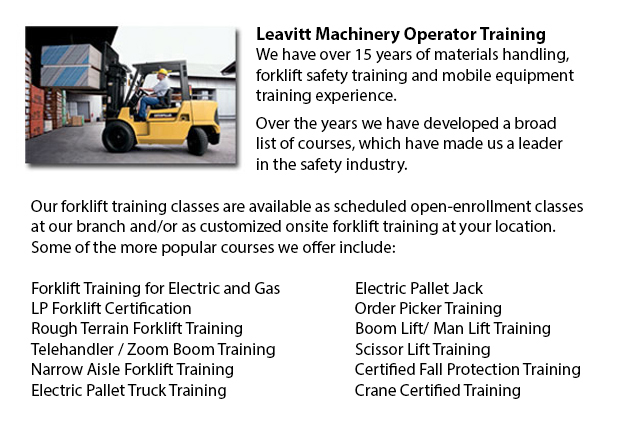
There are in reality two categories of lift trucks within the production industry, the rough terrain model and the industrial version. Rough terrain forklifts appeared in the 1940â??s designed primarily for use on uneven roads, ideal for lumberyards and construction sites, providing lifting muscle when there was no paved surface accessible.
Rough terrain forklifts typically utilize an internal combustion engine with a battery for power. The engines are able to run on propane, diesel or gasoline. Many makers are playing with rough ground lift trucks that make use of vegetable matter and run from ethanol. Substantial pneumatic tires with deep treads typify these lift trucks to allow them to grasp onto the roughest ground type without any slippage or drifting.
The initial versions of rough terrain lift trucks were able to carry weights of up to 1000 lbs, using forks that could slide under the item, raise it a little bit and then move it to a different location. After a decade on the market, rough terrain lift trucks were given supplementary hauling power to about 2000 lbs capacity. Telescoping booms were added in the 1960â??s, enabling them to stack materials much higher than in preceding years. The telescoping design feature is a staple of nearly all all terrain lift trucks these days. Present models are capable of managing well over 4000 lbs thanks to the continual improvements over the years. Telescoping capability has additionally improved with some versions achieving a height of 35 feet. Operator safety has also become a focus with some rough terrain lift trucks now designed are equipped with an enclosed cab for the driver, versus the older open air seating capacity.
The rough terrain lift trucks offered today work equally as well on covered floors as on unpaved surfaces. These rough terrain forklifts are being marketed for their adaptability enabling establishments to transport items from outside the plant to the inside or vice versa.
-
Toyota Forklift
Since 1992, Toyota Material Handling inc., U.S.A., also called TMHU, have been the best selling lift truck dealer in the U.S. This company has been based out of Irvine, California for well over 40 years, offering a comprehensive line of quality lift... More -
Reach Trucks
Reach trucks are loading machines used by varieties of companies that sustain a warehouse facility or circulation center involving the arrangement of completed commodities and equipment on pallets which are inserted into high shelving units. This mac... More -
Genie Forklift
Genie Industries prides itself with the notion of lifting people and resources higher, extending beyond the products they manufacture. A global business that is deeply allied to their customers and enjoys reflecting the spirit of relationship with ev... More -
Scissor Pallet Trucks
Scissor pallet lift trucks are designed for moving and hauling separately stacked pallets by integrating a raising system that allows the pallets on the truck to be elevated. This gear is a great device for functioning in space constrained locations... More -
Scissor Lifts
The scissor lift or table lift, is a mechanical industrial lift that has been adapted to be used in retail, wholesale, manufacturing and production settings. Industrial scissor lifts have been used primarily within production and manufacturing facili... More

Forklift Certification Edmonton
TOLL FREE: 1-888-254-6157
Edmonton, Alberta
forkliftcertificationedmonton.com
Email Us
About Us


